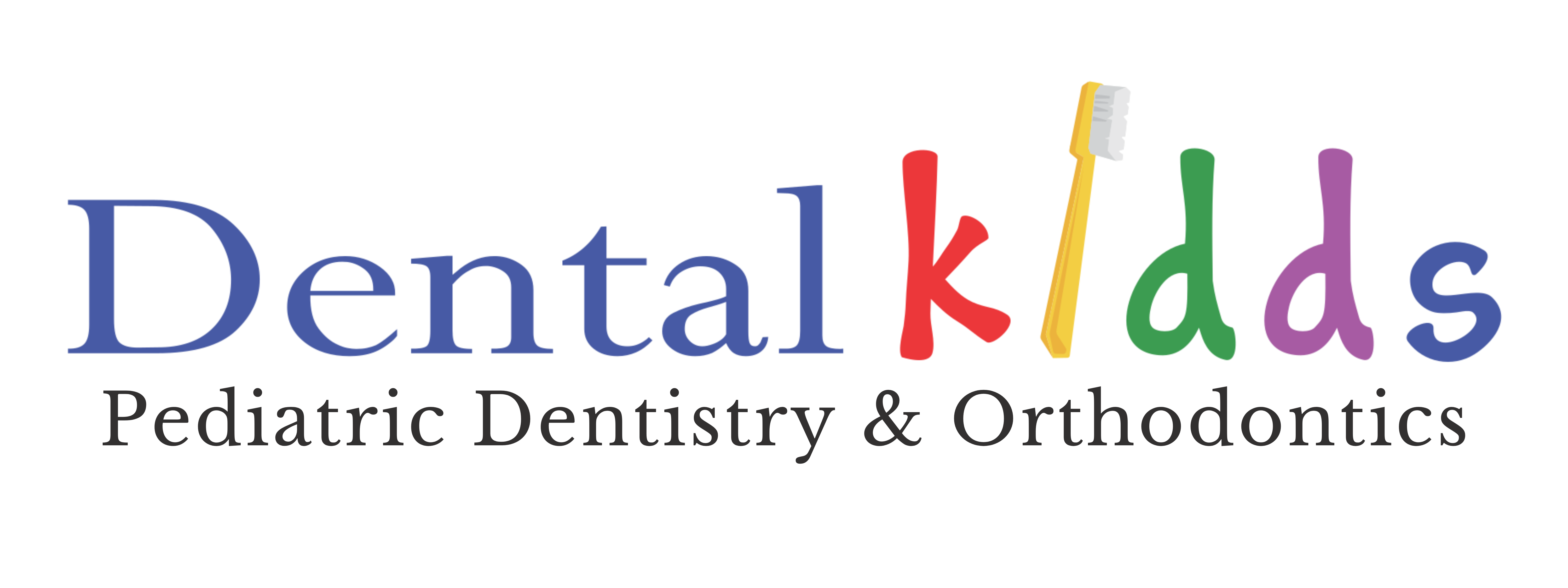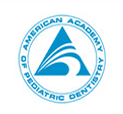











FAQ
What Is A Pediatric Dentist?
Pediatric dentistry is a dental specialty that focuses on the oral health of young people. Following dental school, a pediatric dentist has two to three years of additional specialty training in the unique needs of infants, children and adolescents, including those with special health needs. Because of our doctors’ unique training and natural desire to help kids, our doctors are well-qualified to care for your child from infancy through the teenage years. The very young, pre-teens, and teenagers all need different approaches in dealing with their behavior, guiding their dental growth and development, and helping them avoid future dental problems.
At what age should my child have his/her first dental visit?
“First visit by first birthday” is the general rule. To prevent dental problems, your child should see a pediatric dentist when the first tooth appears, usually between 6 and 12 months of age, certainly no later than the first birthday.
When do the first teeth start to erupt?
Teething, the process of baby teeth coming through the gums into the mouth, varies between babies. Children’s teeth begin forming before birth. Some babies get their teeth early and some get them late. Usually the first baby teeth are the lower front teeth and normally begin erupting between the age of six to eight months. The remainder of the baby teeth appear during the next 18 to 24 months. At two to three years, all 20 baby teeth should be present. Permanent teeth begin appearing around age six, starting with the first molars and lower central incisors.
Adults have 28 permanent teeth, or up to 32 including the third molars (or wisdom teeth).
When should my child start using toothpaste?
Along with the American Academy of Pediatric Dentistry, we recommend using fluoride toothpaste for all ages. Routine topical fluoride exposure, as is done with brushing, is one of the most effective ways to prevent cavities. When young children are properly supervised, risk of problems due to fluoride ingestion is negligible. These are some helpful brushing tips to minimize swallowing and maximize benefits:
- Use a ‘rice size’ amount for children who may not spit.
- Squeeze toothpaste into the bristles of the toothbrush to minimize swallowing.
- Brush under good lighting.
- Move the lips and tongue out of the way to make sure all teeth are brushed well.
- Remember that young children do not have the ability to brush their teeth effectively on their own.
- Children should spit out and not swallow excess toothpaste after brushing.
When Should I start brushing my child’s teeth?
Begin daily brushing as soon as the child’s first tooth erupts. The child can brush on their own to practice the manual dexterity and their independence, but an adult should follow up and always brush for the child until they are able to tie their shoes on their own. After that, the child should be supervised to ensure they are doing a thorough job and brushing for an adequate time. Proper brushing removes plaque from the inner, outer and chewing surfaces of teeth.
When teaching children to brush, place the toothbrush at a 45 degree angle; start along gum line with a soft bristle brush in a gentle circular motion. Brush the outer surfaces of each tooth, upper and lower. Repeat the same method on the inside surfaces and chewing surfaces of all the teeth. Finish by brushing the tongue to remove bacteria that causes bad breath.
When should my child start flossing?
Flossing removes plaque between the teeth where a toothbrush can’t reach. Flossing should begin when any two teeth touch. You may wish to floss your child’s teeth until he or she can do it alone. You can use floss string or floss sticks to be able to access your child’s mouth. Gently scrape the floss against the side of the tooth. Repeat this procedure on each tooth. Don’t forget the backs of the last four teeth.
How safe are dental X-rays?
Radiographs (X-Rays) are a vital and necessary part of your child’s dental diagnostic process. Without them, certain dental conditions can and will be missed. Radiographs detect much more than cavities. For example, radiographs may be needed to survey erupting teeth, diagnose bone diseases, evaluate the results of an injury, or plan orthodontic treatment. Radiographs allow dentists to diagnose and treat health conditions that cannot be detected during a visual exam. If dental problems are found and treated early, dental care is more comfortable for your child and more affordable for you.
In accordance with the American Academy of Pediatric Dentistry, our office recommends taking radiographs based on the needs of the individual child. Some children have multiple risk factors which make them more susceptible to cavities. Therefore, these children need to be followed very closely and may need more frequent radiographs. Pediatric dentists are particularly careful to minimize the exposure of their patients to radiation. With contemporary safeguards, such as lead aprons and digital radiographs, the amount of radiation received in a dental X-ray examination is extremely small. Even though there is very little risk, we are particularly careful to minimize the exposure of child patients to radiation. In fact, dental X-rays represent a far smaller risk than an undetected and untreated dental problem.
What causes tooth decay and how can I prevent it?
Four things are necessary for cavities to form — a tooth, bacteria, sugars or other carbohydrates and time. Dental plaque is a thin, sticky, colorless deposit of bacteria that constantly forms on everyone’s teeth. When you eat, the sugars in your food cause the bacteria in plaque to produce acids that attack the tooth enamel. With time and repeated acid attacks, the enamel breaks down and a cavity forms.Good oral hygiene removes bacteria and the left over food particles that combine to create cavities. For infants, use a wet gauze or clean washcloth to wipe the plaque from teeth and gums. Avoid putting your child to bed with a bottle filled with anything other than water. For older children, brush their teeth at least twice a day. Also, watch the number of snacks containing sugar that you give your children. The American Academy of Pediatric Dentistry recommends six-month visits to the pediatric dentist beginning at your child’s first birthday. Routine visits will start your child on a lifetime of good dental health. Your pediatric dentist may also recommend protective sealants for your child. Sealants can be applied to your child’s molars to prevent decay on hard to clean surfaces.
What if my Child Grinds His Teeth At Night?
Parents are often concerned about the nocturnal grinding of teeth (bruxism). Often, the first indication is the noise created by the child grinding on their teeth during sleep. The parent may notice wear (teeth getting shorter) to the dentition. One theory as to the cause involves a psychological component. Many factors can influence a child to grind their teeth, including stress from a new environment, divorce, changes at school, etc. The majority of cases of pediatric bruxism do not require any treatment. The good news is most children outgrow bruxism. The grinding gets less between the ages six to nine and children tend to stop grinding between ages nine to twelve.
What is the Best Time for Orthodontic Treatment?
Developing malocclusions can be recognized as early as two to three years of age. Often, early steps can be taken to reduce the need for major orthodontic treatment at a later age.
Stage I Early Treatment: This period of treatment encompasses ages two to six years. At this young age, we are concerned with underdeveloped dental arches, the premature loss of primary teeth, and harmful habits such as finger or thumb sucking. Treatment initiated in this stage of development is often very successful and many times, though not always, can eliminate the need for future orthodontic/orthopedic treatment.
Stage II Mixed Dentition: This period covers the ages of six to twelve years, with the eruption of the permanent incisor (front) teeth and first permanent molars. Treatment concerns deal with jaw and dental realignment problems. This is an excellent stage to start treatment, when indicated, as your child’s hard and soft tissues are usually very responsive to orthodontic or orthopedic forces.
Stage III Adolescent Dentition: This stage deals with the permanent teeth and the development of the final bite relationship.
Can thumb-sucking be harmful for my child’s teeth?
Sucking is a natural reflex and infants and young children may use thumbs, fingers, pacifiers and other objects on which to suck. It may make them feel secure and happy or provide a sense of security at difficult periods. Since thumb sucking is relaxing, it may induce sleep.
Thumb sucking that persists beyond the eruption of the permanent teeth can cause problems with the proper growth of the mouth and tooth alignment. How intensely a child sucks on fingers or thumbs will determine whether or not dental problems may result. Children who rest their thumbs passively in their mouths are less likely to have difficulty than those who vigorously suck their thumbs.
Children should cease thumb sucking by the time their permanent front teeth are ready to erupt. Usually, children stop between the ages of two and four. Peer pressure causes many school-aged children to stop.
Pacifiers are no substitute for thumb sucking. They can affect the teeth essentially the same way as sucking fingers and thumbs. However, use of the pacifier can be controlled and modified more easily than the thumb or finger habit.
A few suggestions to help your child get through thumb sucking:
- Instead of scolding children for thumb sucking, praise them when they are not.
- Children often suck their thumbs when feeling insecure. Focus on correcting the cause of anxiety, instead of the thumb sucking.
- Reward children when they refrain from sucking for prolong periods.
- Your pediatric dentist can encourage children to stop sucking and explain what could happen if they continue.
- If these approaches don’t work, remind the children of their habit by bandaging the thumb or putting a sock on the hand or an ace bandage on the elbow at night. Your pediatric dentist may recommend the use of a mouth appliance.
What is “Baby Bottle Tooth Decay?”
One serious form of decay among young children is baby bottle tooth decay. This condition is caused by frequent and long exposures of an infant’s teeth to liquids that contain sugar. Among these liquids are milk, formula, fruit juice and other sweetened drinks.
Putting a baby to bed for a nap or at night with a bottle other than water can cause serious and rapid tooth decay. The liquid pools around the child’s teeth giving plaque bacteria an opportunity to produce acids that attack tooth enamel. If you must give the baby a bottle to comfort at bedtime, it should contain only water. If your child won’t fall asleep without the bottle and its usual beverage, gradually dilute the bottle’s contents with water over a period of two to three weeks.
After each feeding, wipe the baby’s gums and teeth with a damp washcloth or gauze pad to remove plaque. The easiest way to do this is to sit down, place the child’s head in your lap or lay the child on the floor. Whatever position you use, be sure you can see into the child’s mouth easily.
How do I make my child’s diet safe for his teeth?
Healthy eating habits lead to healthy teeth. Like the rest of the body, the teeth, bones and the soft tissues of the mouth need a well-balanced diet. Limiting the servings of sugars and processed starches will also aid in protecting your child’s teeth from decay. Most snacks that children eat can lead to cavity formation. The more frequently a child snacks, the greater the chance for tooth decay. How long food remains in the mouth also plays a role. For example, hard candy and breath mints stay in the mouth a long time, which cause longer acid attacks on tooth enamel. If your child must snack, choose nutritious foods such as vegetables, low-fat yogurt, nuts, nut butters and low-fat cheese which are healthier and better for children’s teeth.
Why does my child have 2 rows of teeth?
If your child has a tooth growing in behind another tooth, don’t panic. It’s a relatively common occurrence in children, and although it can look scary, it’s easy to treat and there are not usually ongoing problems.
Most children will start to lose their baby teeth and get permanent teeth between the ages of five and seven. When a permanent tooth erupts directly underneath a baby tooth, it resorbs the root of the baby tooth, causing it to become loose and fall out so that the permanent tooth can take its place. Sometimes, however, a permanent tooth will not grow in directly underneath the baby tooth, and the root of the baby tooth will remain intact and it will not get “pushed out”. When that occurs, the permanent tooth will usually start to come in right behind the baby tooth, giving a child a “shark tooth” appearance. The most common place for this to occur is the lower and upper front teeth, but it can happen anywhere. If your child has a tooth behind a tooth, you need to check how loose the baby tooth is. If it’s very loose, encourage your child to work on wiggling the tooth out. If he or she can get it out on their own, that’s always best. If the tooth is only a little bit loose or not loose at all, he or she will probably have to come to our office to get the tooth extracted. Once the baby tooth is out, your child’s tongue may naturally push the permanent tooth forward into the correct position if there is enough space for it. Children who have moderate to severe crowding may not have room for the permanent tooth even after the baby tooth is out, and an orthodontic consultation would be appropriate.

 St. Croix Kidds
St. Croix Kidds








